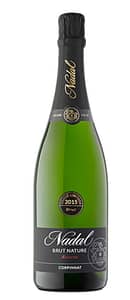While Norway changed government with parades and speeches, an interesting tasting took place just across the street at the Grand Hotel. This tasting in Oslo was the first official Corpinnat tasting outside of Spain.
To be short, Corpinnat (meaning born in the Penedès, after Roman etymological roots) is a group of Catalan producers of sparkling wine that has left DO Cava. All ten producers with wines in the market were represented. Leading the tasting was Carles del Amor, export director of Nadal, one of the six founding members – together with Liora Levi, Norwegian sommelier and wine writer.
The tasting showed a variety of styles. Some wineries contributed what they consider the more typical from their range, while others offered “top” wines. There were examples of restrained, mineral wines, while others were more on the fruity side. Some dominated by the xarel.lo grape (also varietals), others with more parellada. One rosé.
There will be a longer report that I will link to here. Now I will just present one wine in the ever ongoing Wine of the Week series.
Since Carles is here (on behalf of Corpinnat, that is) I still want to focus a bit on Nadal‘s contribution. Their Brut Nature Reserve 2015 was maybe the most flowery/fruity of the lot. This can maybe be seen from the grape composition; parellada 57%, xarel.lo 22%, macabeu 21%. While xarel.lo is a variety with a lot of acidity and preferred in wines made for ageing, parellada contributes more finesse and aroma. This said, Carles tells that they have a project going on, trying to prepare parellada for more ageing, for example by moving higher up towards the Pyrenees. By doing this they also prepare themselves for new, hotter times. The wine has an ageing of 60 months on the lees, is a non dosé obviously organically grown (as is mandatory without Corpinnat), and it’s degorged 21st June 2021 (also obligatory information within the group).
Here are other posts about members of the group (search the site for more):
Brut Nature Reserve 2015 (Nadal)
Light golden; fruity with aromas of white flowers, elegant yeast notes, a subtle hint of ginger and nuts; quite soft structure, but enough acidity – wonderfully balanced.
Price: Medium
Food: Fish, shellfish, light meat, salads various tapas and the best serrano hams
Leave a Comment













